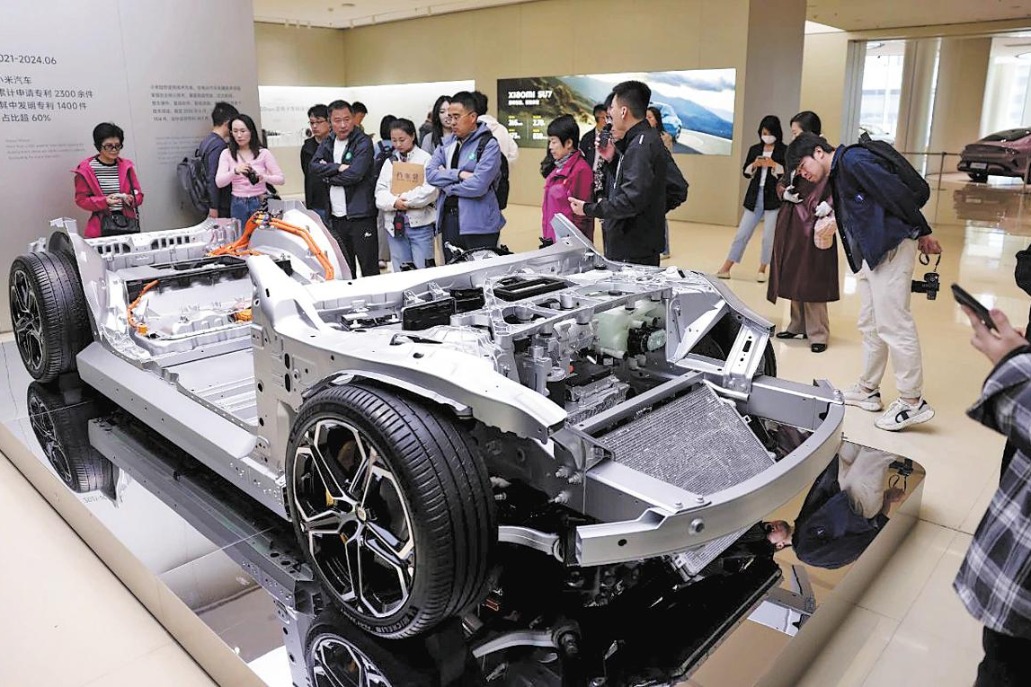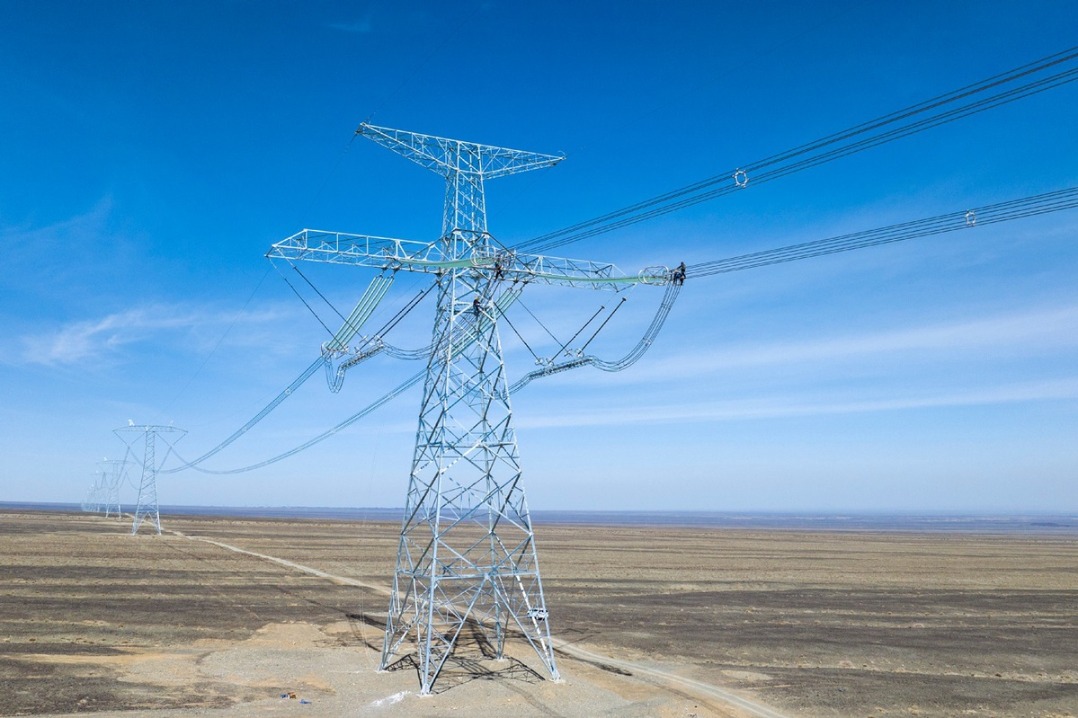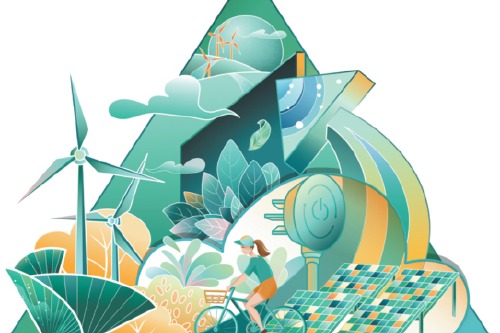The world of economics turned inside out

Slowly but surely, a bruised and battered global economy now appears to be shaking off its deep post-global financial crisis malaise. If the International Monetary Fund's latest forecasts are borne out-an iffy proposition, to be sure-the nearly 3.6 percent average annual growth in world GDP expected in the 2017-18 period would represent a modest uptick from the 3.2 percent pace of the past two years. A decade after the global financial crisis, global growth is finally returning to its 3.5 percent post-1980 trend.
But this round trip hardly signals that the world is back to normal. On the contrary, the overhyped idea of a "new normal" for the world economy overlooks an extraordinary transformation in the global growth dynamic over the past nine years.
At the margin, the recent improvement has been concentrated in the advanced economies, where GDP growth is now expected to average 2 percent in 2017-18-a meaningful pickup from the unprecedentedly anemic 1.1 percent average growth of the preceding nine years. Relative strength in the United States (2.4 percent) is expected to be offset by weakness in both Europe (1.7 percent) and Japan (0.9 percent). However, annual growth in the advanced economies is expected to remain considerably below the longer-term trend of 2.9 percent recorded during the 1980-2007 period.
By contrast, the developing world keeps moving at a much faster pace. Although the average growth rate expected for these economies in 2017-18, at 4.6 percent, is about half a percentage point lower than during the preceding nine years, they would still be expanding at more than twice the pace of the developed world. Unsurprisingly (at least to those of us who never bought into the Chinese hard-landing scenario), strength in the developing world is expected to be concentrated in China (6.4 percent) and India (7.5 percent), with growth lagging in Latin America (1.5 percent) and Russia (1.4 percent).
This persistent divergence between developed and developing economies has now reached a critical point. From 1980 to 2007, the advanced economies accounted for an average of 59 percent of world GDP (measured in terms of purchasing power parity), whereas the combined share of developing and emerging economies was 41 percent. That was then. According to the IMF's latest forecast, those shares will completely reverse by 2018: 41 percent for the advanced economies and 59 percent for the developing world.
The pendulum of world economic growth has swung dramatically from the so-called advanced countries to the emerging and developing economies. New? Absolutely. Normal? Not even close. It is a stunning development, one that raises at least three fundamental questions about our understanding of macroeconomics:
First, isn't it time to rethink the role of monetary policy?
The anemic recovery in the developed world has occurred against the backdrop of the most dramatic monetary easing in history-eight years of policy interest rates near the zero bound and enormous liquidity injections from vastly expanded central bank balance sheets.
Yet these unconventional policies have had only a limited impact on real economic activity, middle-class jobs and wages. Instead, the excess liquidity spilled over into financial markets, sustaining upward pressure on asset prices and producing outsize returns for wealthy investors. Like it or not, monetary policy has become an instrument of mounting inequality.
Second, has the developing world finally broken free of its long-standing dependence on the developed world?
I have long argued that claims of such a "decoupling" were spurious, given the persistence of export-led growth in poorer countries, which tethers their economies to external demand in richer countries. But the facts now speak otherwise. Growth in global trade slowed to a 3 percent average pace in the 2008-16 post-crisis period-h(huán)alf the 6 percent norm from 1980 to 2016. Yet over the same period, GDP growth in the developing economies barely skipped a beat. This attests to a developing world that is now far less dependent on the global trade cycle and more reliant on internal demand.
Finally, has China played a disproportionate role in reshaping the world economy?
China's rebalancing suggests that this may well be the case. Historically, China's hugely successful export-led growth strategy, together with the rapid growth of China-centric global supply chains, was the major reason why I never bought the decoupling story. Yet the export share of China's GDP tumbled from 35 percent in 2007 to 20 percent in 2015, while its share of global output surged from 11 percent to 17 percent during the same period. China, the world's largest exporter, may well be in the vanguard of global decoupling.
This hints at an even more powerful trend: the rapid transformation of China's industrial structure. China's tertiary sector (services) has gone from 43 percent of GDP in 2007 to 52 percent in 2016, whereas the share of the secondary sector (manufacturing and construction) has fallen from 47 percent to 40 percent over the same period. While the private consumption share of aggregate demand increased more slowly, largely owing to high precautionary savings (which reflects gaps in the social safety net), there are grounds for optimism on this front as well.
Indeed, the explosive growth of China's e-commerce points to a shortcut toward a newly vibrant consumer culture that was unavailable to today's advanced economies at a similar stage of development. In the annals of structural change, where shifts tend to be glacial, China's evolution is a sprint.
All of this speaks to a radically different world than that which prevailed prior to the global financial crisis-a world that raises profound questions about the efficacy of monetary policy, development strategies, and the role of China. While some healing of an $80 trillion global economy is now evident, progress needs to be seen through a different lens than used in past cycles. A world turned inside out, with new dynamism in the developing world far eclipsing lingering malaise in the advanced economies, is new-but hardly normal.
The author, a faculty member at Yale University and former chairman of Morgan Stanley Asia, is the author of Unbalanced: The Codependency of America and China.


































